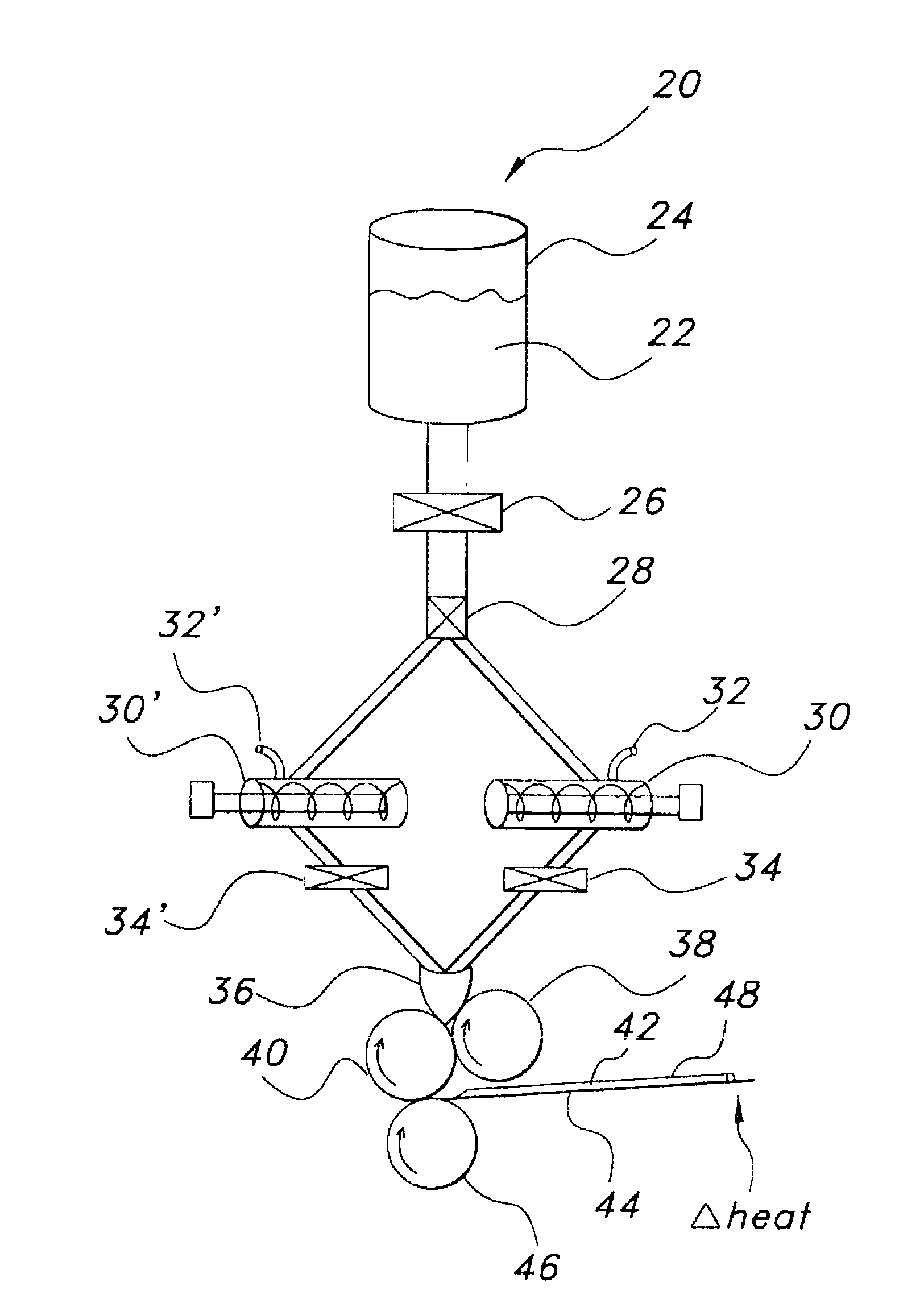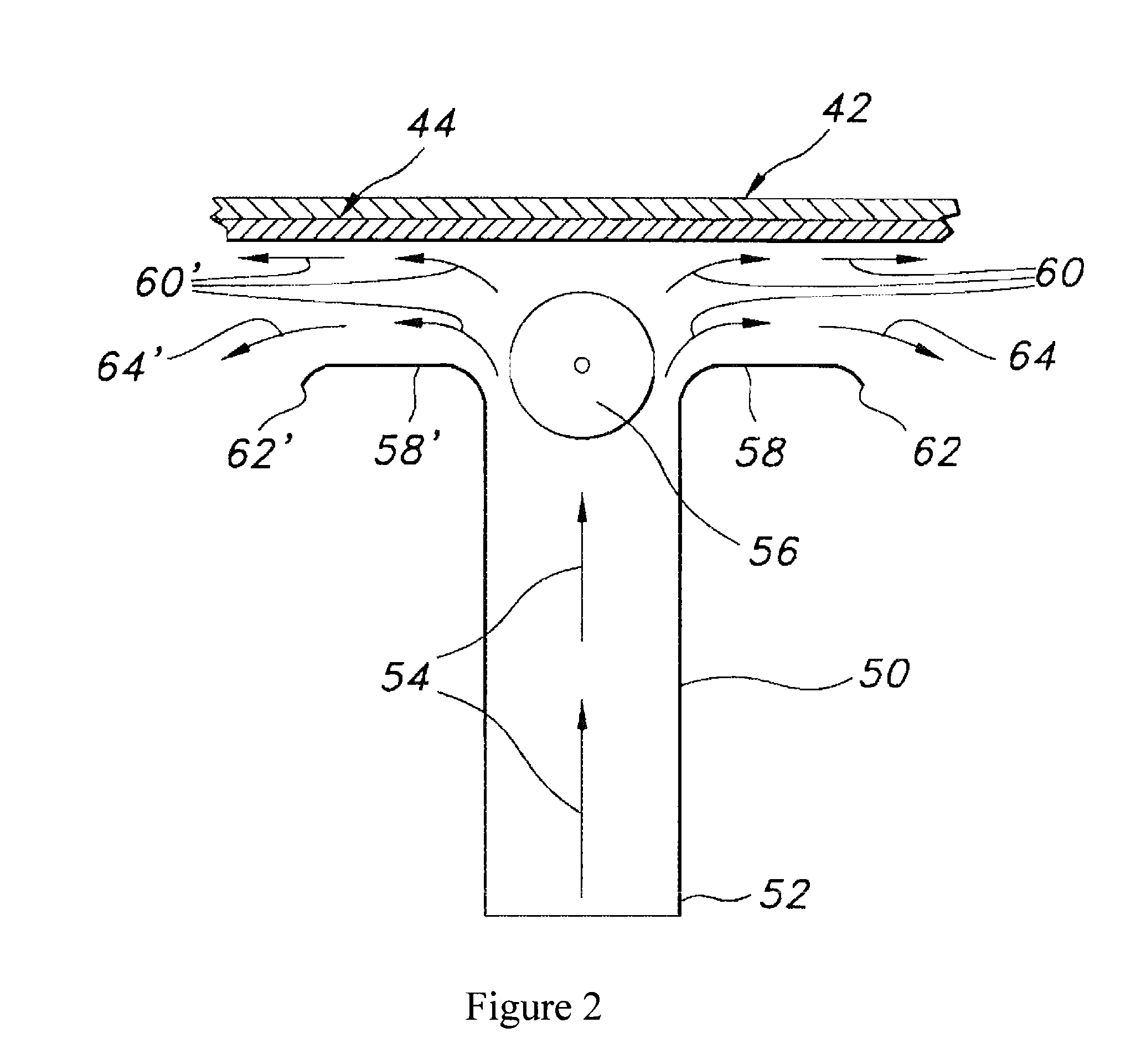Method and system for optimizing film production and minimizing film scrap
a technology of optimizing applied in the field of optimizing film production and minimizing film scrap, can solve the problems of inefficient current processes and manufacturing designs, waste of material that is not usable and therefore waste of material, and inability to meet the needs of production, so as to reduce the total amount of scrap
- Summary
- Abstract
- Description
- Claims
- Application Information
AI Technical Summary
Benefits of technology
Problems solved by technology
Method used
Image
Examples
example i
Correlating Lost Coating to the Tank Size
[0161]In order to understand the coating lost to the mixer and hoses, 192 runs on various sized tanks were completed. The amount of coating solution lost was tabulated for each run. Then, average solution lost was computed for each tank size over the total number of runs reviewed. Below is a listing of the data from the 192 runs at tank sizes including 40 liter, 120 liter, 400 liter, 1,000 liter and 2,000 liter The trend of tank size versus solution lost is depicted in FIG. 6, which correlates the trend observed from the data into the formula: y=3.3988 Ln(x)−6.9467, where y includes the coating lost to hoses and tank surfaces, and x includes the tank size.
[0162]The average mixing losses, which are depicted on FIG. 6, are set forth in Table II below:
TABLE IIMixer Losses (kg)Tank sizeAverage(liters)solution lost (kg)404.8312010.7640012.49100016.911,200018.67
[0163]Seventeen runs were completed on a 40 liter Tank. Table III below depicts the tota...
example ii
Determining Coating Losses as Related to Start-Up / Shut-Down
[0171]In order to understand the coating losses which are attributed to the start-up and shut-down of the oven / drying process, the amount of coated solution lost was tabulated over 206 runs. As scrap in some of these runs were high as a result of one time anomalies, one hundred of the most ideal runs (lowest scrap) lots were used as examples for this calculation. Efficiency in the start-up and shut-down is an area in which constant efforts are made to improve. The amount of scrap film was tracked for each run. “Scrap film” refers to that film which did not have the proper uniformity / consistency upon the completion of the drying process, thus it was discarded. For the runs in this Example, the oven length was a standard length of 9 m. The average total scrap for each run was 87 m, regardless of the batch size. Thus, 87 m of scrap, divided by 9 m of oven length is 9.7, which is the coefficient of equation 5 (eq. 5), a variable...
example iii
Exemplary Film or Sheet Process with Exemplary Scrap
[0176]Table IX below depicts, for tank sizes of 40 liter, 120 liter, 400 liter, 1000 liter and 2000 liter, the possible results of a batch of solution, which is coated, dried, cut and packaged. The film manufacturing process along these metrics has scrap computed for it, including a scrap for mixing, a scrap for coating, a scrap for slitting and a scrap for packaging. For the purposes of this example, the optimum coating width discussed above was used.
TABLE IXTank Size (liters)4010040010002000Total Batch wt (kg)381153809501900Theoretical Strips152,000460,0001,520,0003,800,0007,600,000strips to coater129,767422,6931,466,4233,733,9507,524,515% Mixing Scrap14.6%8.1%3.5%1.7%1.0%strips to slitter99,742359,1551,344,9323,514,8567,181,920% Coating scrap19.8%13.8% 8.0%5.8%4.5%strips to packaging92,101344,7611,311,3693,451,2927,057,676% Slitting Scrap 5.0%3.1%2.2%1.7%1.6%total packaged strips82,123317,7781,219,3313,215,2316,578,897% Packagin...
PUM
| Property | Measurement | Unit |
|---|---|---|
| thickness | aaaaa | aaaaa |
| thickness | aaaaa | aaaaa |
| thickness | aaaaa | aaaaa |
Abstract
Description
Claims
Application Information
 Login to View More
Login to View More - R&D
- Intellectual Property
- Life Sciences
- Materials
- Tech Scout
- Unparalleled Data Quality
- Higher Quality Content
- 60% Fewer Hallucinations
Browse by: Latest US Patents, China's latest patents, Technical Efficacy Thesaurus, Application Domain, Technology Topic, Popular Technical Reports.
© 2025 PatSnap. All rights reserved.Legal|Privacy policy|Modern Slavery Act Transparency Statement|Sitemap|About US| Contact US: help@patsnap.com



